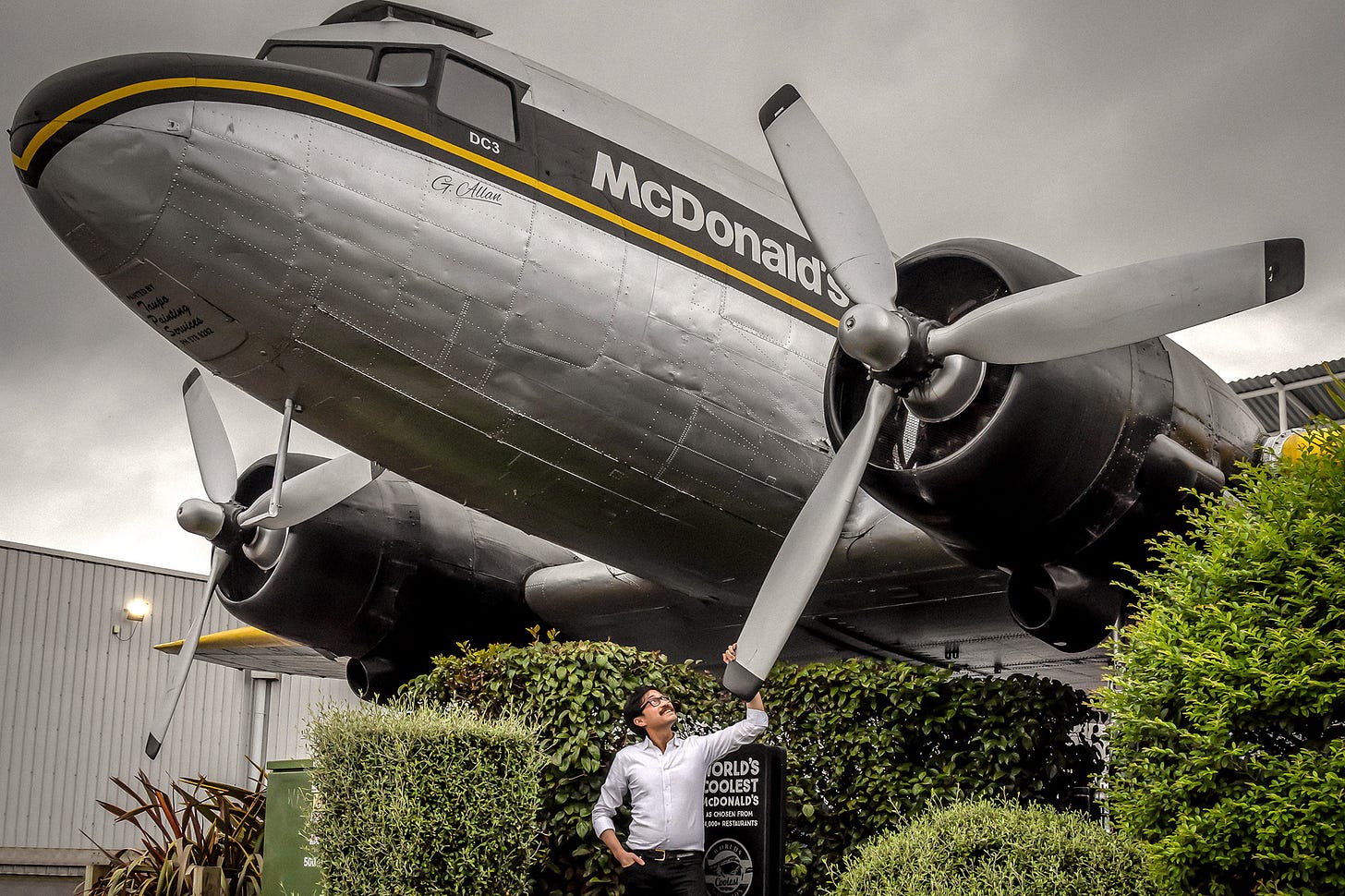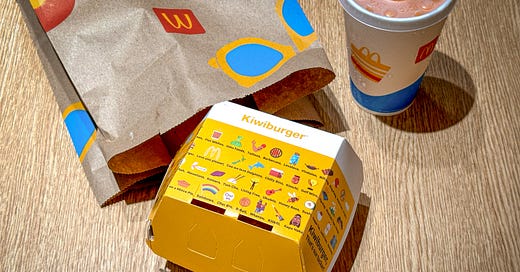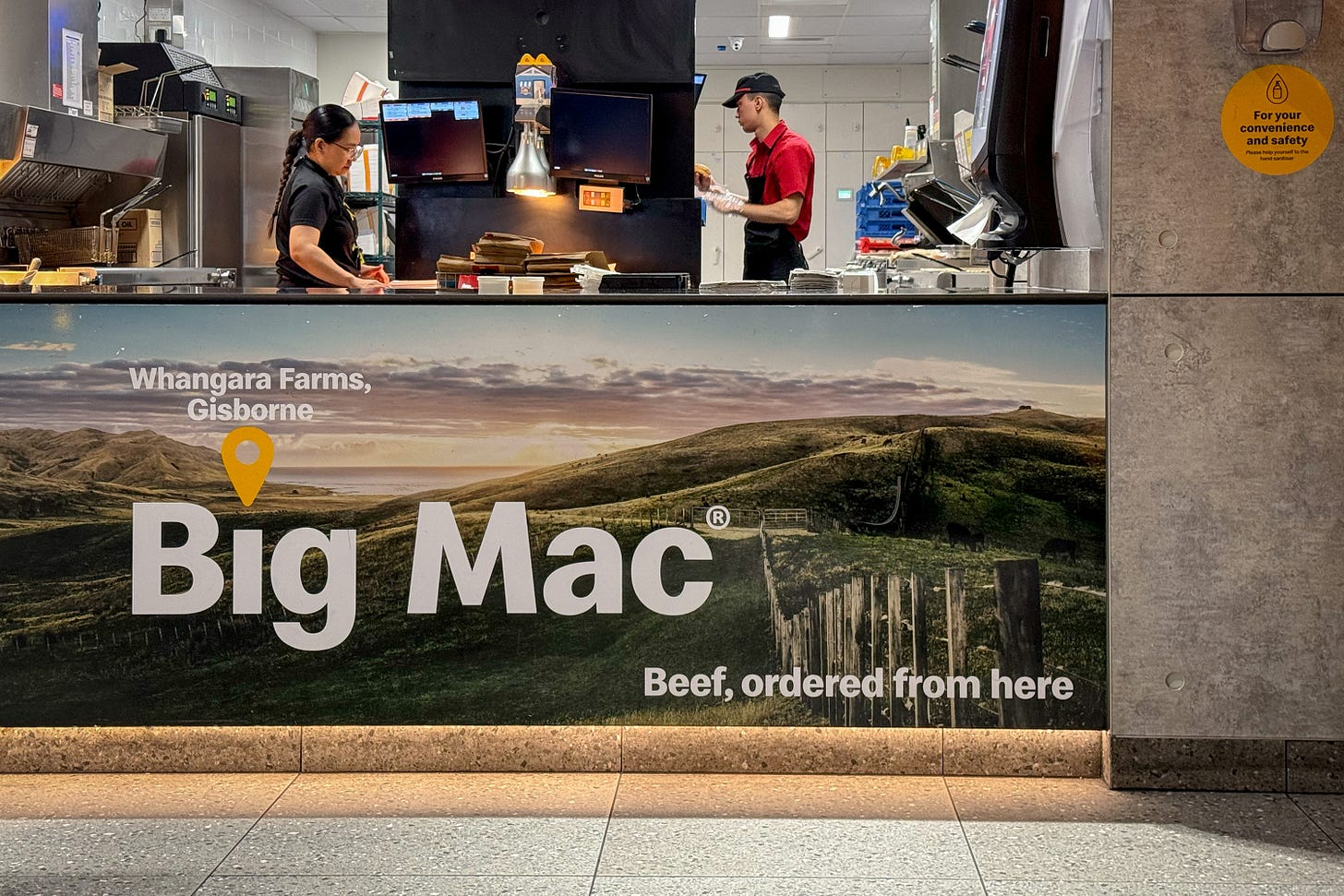AUCKLAND, New Zealand — Long distance air travel is in the news, as fans calculate if Taylor Swift will be able to make it from a Saturday night performance of the Eras Tour in Tokyo in time to watch her boyfriend Travis Kelce compete in the Super Bowl in Las Vegas on Sunday. Turns out it’s not even a close call: as Swift crosses the International Date Line, she will “jump back” a day, and land earlier than she took off. Magic!
Well, if Taylor Swift is taking a long haul flight, then I, too, must take a long haul flight to my personal Super Bowl… to eat and photograph an iconic McDonald’s sandwich in New Zealand before the limited time offering once again disappears from the menu.
From New York City, it’s 8,829 air miles to Auckland, the fifth longest flight in the world, clocking in at 17 hours and 35 minutes. Unconvinced that this trip was bad enough for my body, I opted for a much longer route: New York to Los Angeles to Sydney to Auckland, a total time in transit of 32 hours with 24 of those hours in the air. It’s not even a route that is normally sold—Australian flag carrier Qantas is still doing testing on the health effects of ultralong flights—but was haphazardly cooked up over the phone with American Airlines agents to circumvent weather delays. Anything for journalism……
McDonald’s arrived in New Zealand in 1976, back when each new market was a wild west for the brand now famous for consistency and standardization. The restaurant chain was built on the efforts of individual entrepreneurial franchisees who put their life savings on the line to open their satellite stores. Understandably, these people ~had thoughts~ about the best way to run their businesses. Wild store designs, off-brand marketing strategy, and even rogue menu items were the norm.

It is in this chaotic environment that Bryan Old, one of the earliest McDonald’s franchisees in the nascent New Zealand market, decided to test a new product. Featuring beetroot and fried egg atop a beef patty, the Kiwiburger contained neither the green fuzzy fruit nor meat of an endangered bird—New Zealanders have been nicknamed “Kiwis” since the early 1900s.
The Kiwiburger was initially available only in Mr. Old’s five Hamilton-area stores. The product would prove to be popular, and in 1991 McDonald’s New Zealand began to offer the burger nationwide.
By the late 90s, the anti-globalization movement had set its sights on the market leader in the restaurant space. McDonald’s responded by further localizing menus and emphasizing the local aspect of existing products in its foreign markets. In New Zealand, this was simple: the Kiwiburger had firmly embedded itself into the national psyche, as the style of beetroot and fried egg burgers had been adapted by several local restaurants and chains. McDonald’s launched a TV advertising campaign with a theme song listing 46 things associated with New Zealanders, the Kiwiburger among them. The product’s box was also redesigned to feature the items featured in the jingle. It was now a matter of national pride to eat at the American burger joint.
Supply issues forced McDonald’s to discontinue the Kiwiburger as a regular menu item years later, but the company occasionally brings the product back as a limited time offer, allowing them to run the advertising jingle anew and triggering a wave of hype and media attention (and forcing at least one journalist working on a social anthropology project to take a very long flight. Oy.)
Today, the Kiwiburger is recognized as a core part of the local culture and heritage. “By joining breakfast, lunch, and dinner in one meal, it’s a prime example of Kiwi ingenuity at its best,” says the New Zealand government’s website.
Though the heyday of anti-globalist protests are long behind it, McDonald’s still highlights the local nature of the products here by emphasizing that its burgers—all of them—use 100% New Zealand beef. The message is stamped onto the inside of every box and is displayed prominently in stores.
So while you may have to wait a few years for the Kiwiburger to return after the current promotional run, don’t discount the Big Mac or the Quarter Pounder when you visit New Zealand—it’s a different burger than the one you eat back home.





